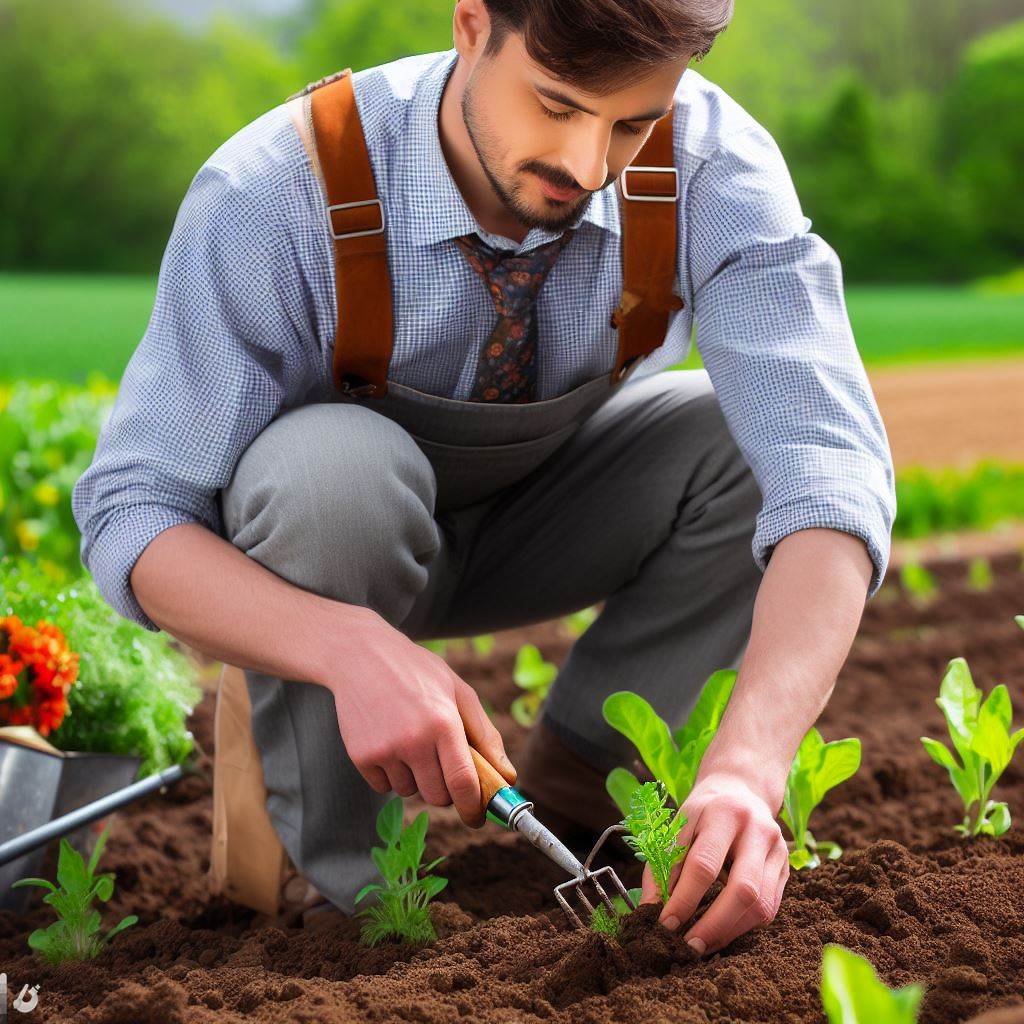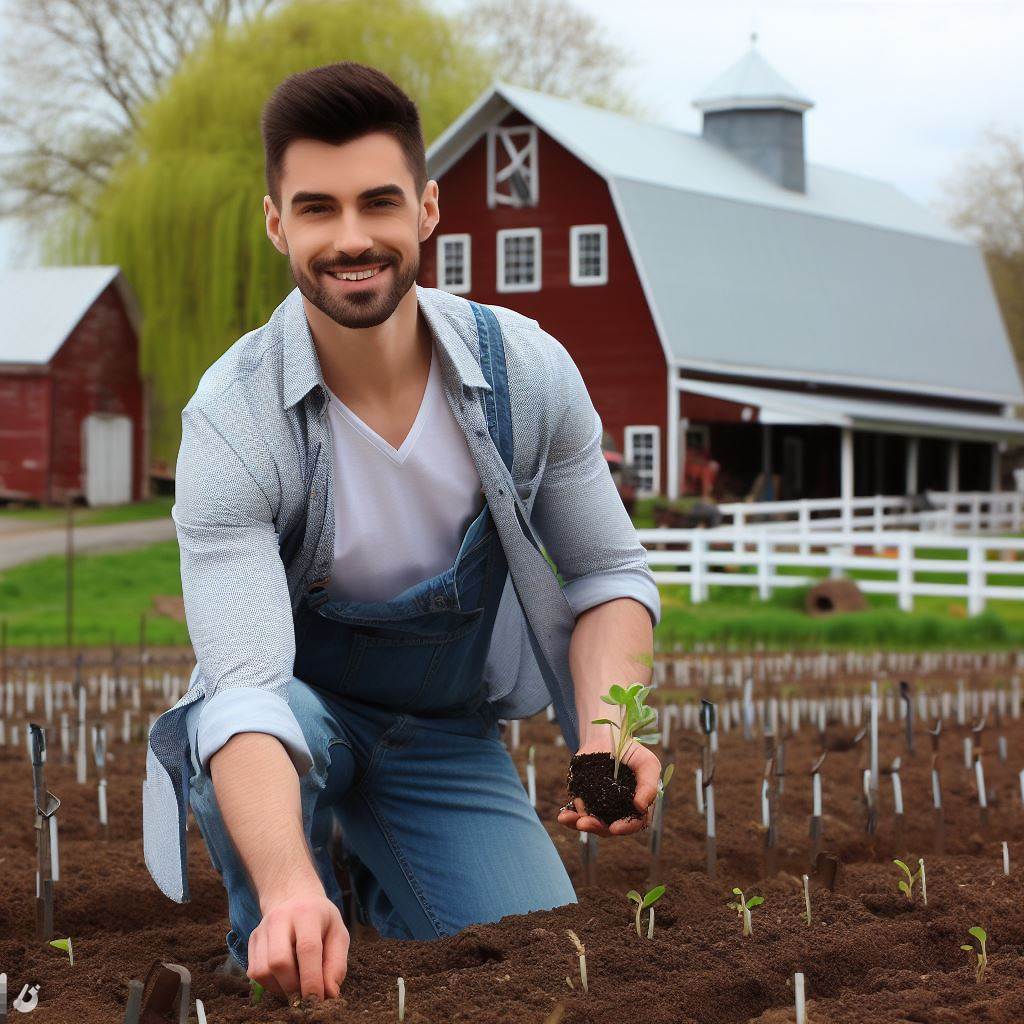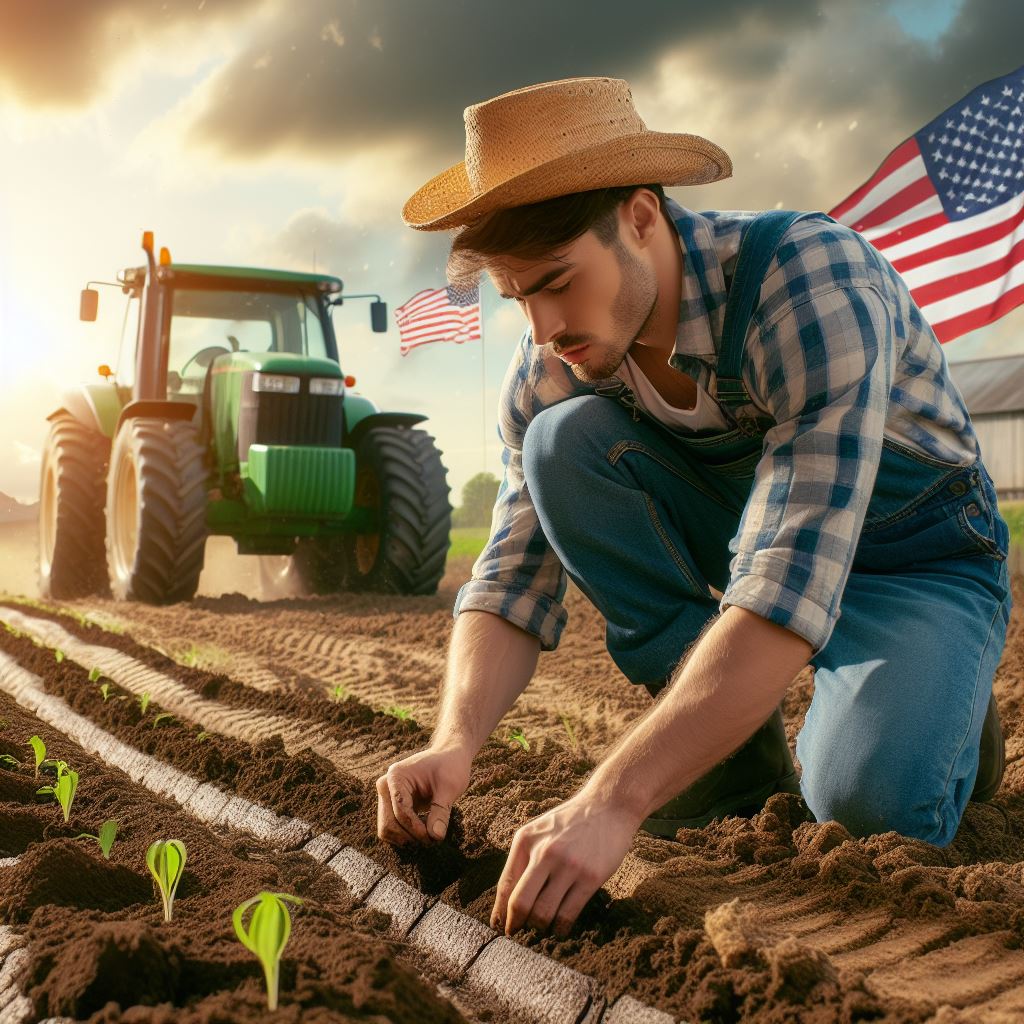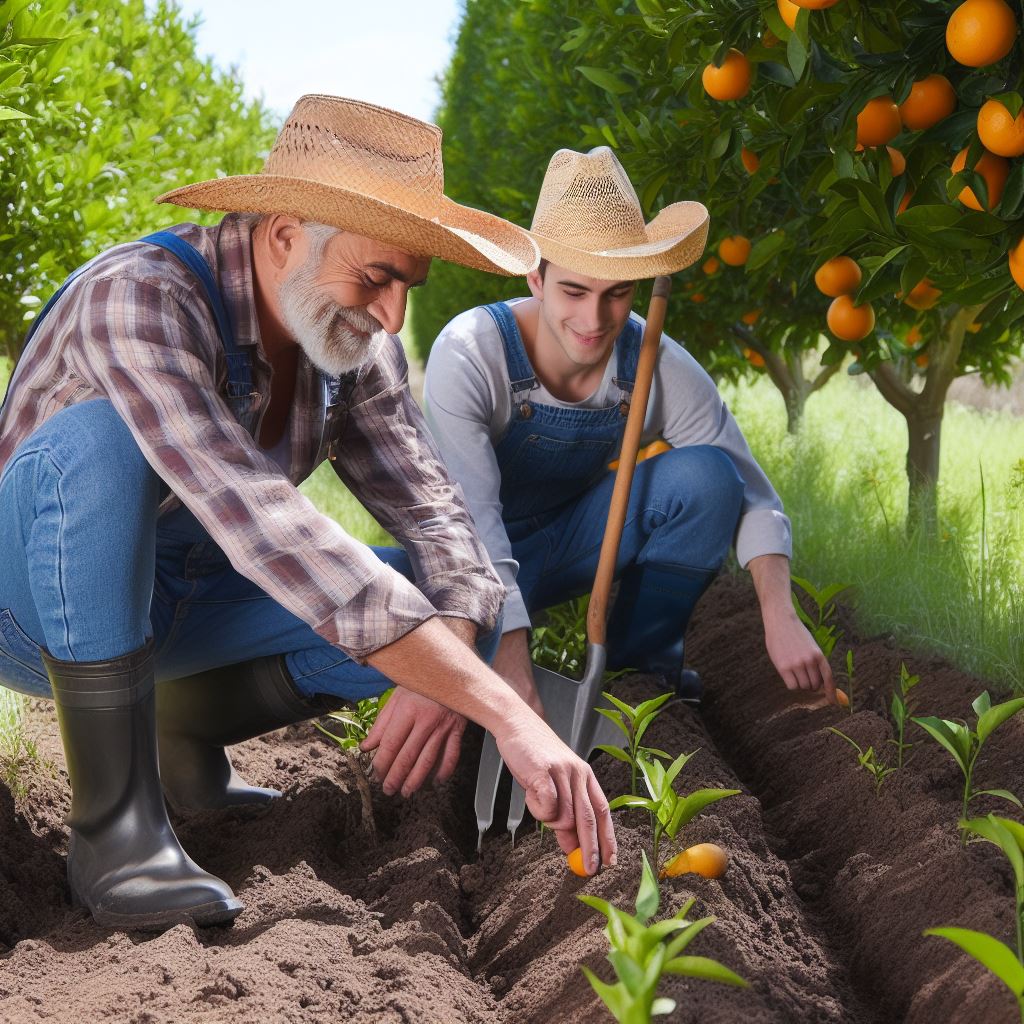Introduction
Let’s explore tilling tales: A family farm history.
Tilling tales are the stories that have been passed down through generations on a family farm.
A family farm’s history holds great significance as it reflects the legacy and traditions of the land.
In the heartland of agriculture, where the soil holds not just the promise of crops but the echoes of generations past, a family farm becomes a living, breathing chronicle of history.
This exploration, titled “Tilling Tales,” invites you to embark on a poignant journey through time, where each furrow and field tells a story—a story of hard work, resilience, and the unwavering bond between a family and their land.
As we step into the rustic embrace of this family farm, the air is thick with the fragrance of fertile soil and the whispers of stories woven into the fabric of the landscape.
Beyond the plows and barns lie narratives that transcend the seasons, carrying the weight of tradition and the wisdom of those who toiled before us.
The purpose of this blog post is to delve into the rich history of a particular family farm.
This series of sections will unravel the layers of this agricultural saga, delving into the challenges, triumphs, and enduring legacies etched into the very soil beneath our feet.
“Tilling Tales” is not just an exploration of farming practices; it is an odyssey through time, an ode to the unyielding spirit of family farming that continues to shape the present and future of agriculture.
Join us as we plow through the pages of history, unearthing the treasures buried within a family farm’s storied past.
The Founding
Background information on the family farm
The family farm, located in a small rural town, has been a cornerstone of the community for generations.
How and when it was founded
In the early 1900s, John and Mary Smith, the ancestors of the current owners, established the farm.
The original goals and vision for the farm
With a strong commitment to sustainable agriculture, their vision involved creating a self-sufficient farm that would support their growing family.
Determined to provide for their children and generations to come, they worked tirelessly to build a thriving agricultural business.
Transform Your Agribusiness
Unlock your farm's potential with expert advice tailored to your needs. Get actionable steps that drive real results.
Get StartedTheir goal was to cultivate crops and raise livestock that would not only sustain them but also provide for the local community.
They believed in the value of hard work and saw the farm as a place of growth, both physically and emotionally.
They envisioned a farm where their children would learn the importance of respecting the land and building strong familial bonds.
Their vision for the farm extended beyond just agricultural production; they wanted to create a place where people could come together.
The farm became a hub of social activity, hosting community gatherings, barn dances, and even educational workshops.
Their dedication to sustainable farming practices set them apart from others in the area.
They believed in working with nature, rather than against it, and implemented innovative techniques to ensure the health of the land.
As the farm grew, so did the family’s passion for sharing their knowledge and experiences with others.
They became known for their generosity, often inviting neighbors and friends to learn from their practices.
Their pioneering spirit attracted like-minded individuals who saw the potential of the farm as a model for sustainable agriculture.
Over time, the family farm became a testament to their dedication and hard work.
Generations later, their descendants continue to honor their legacy by preserving the original goals and vision for the farm.
Despite changes in technology and advancements in agriculture, the farm remains true to its founding principles.
Today, the family farm stands as a symbol of heritage and resilience, a reminder of the importance of sustainable farming practices.
As the farm continues to evolve and adapt to modern challenges, its history and legacy remain firmly rooted in the family’s founding vision.
Generational Changes
The transition from one generation to another
- The family farm, started by the patriarch, witnessed a significant transition over the years.
- As the older generation passed on the farming legacy, the reins were handed over to the next.
- The transition from one generation to another marked a shift in perspectives and management styles.
- The younger generation brought fresh ideas and enthusiasm, adapting to modern farming practices.
How each generation added their own touch to the farm
- With each new generation, the family farm experienced a unique touch and innovation.
- The second generation introduced improved irrigation systems, enhancing crop productivity.
- The third generation implemented organic farming techniques, catering to changing consumer preferences.
- Infused with technology, the current generation integrated precision farming methods for optimal results.
The challenges and successes throughout the years
- Over the years, the family farm encountered various challenges, testing the resilience of each generation.
- The first generation battled against unpredictable weather conditions and limited resources.
- Despite the challenges, their hard work and determination resulted in small but significant successes.
- The second generation faced economic downturns, forcing them to diversify the farm’s operations.
- By embracing agri-tourism, they successfully attracted visitors and boosted their income.
- The third generation encountered environmental concerns and market competition, but they adapted and thrived.
- Their ability to embrace sustainable practices and forge partnerships led to greater market share.
- The current generation faces the challenge of climate change, necessitating innovative adaptation strategies.
- Through the use of renewable energy and sustainable crop rotations, they continue to succeed.
- The generational changes in the family farm have witnessed an evolution in farming practices and management.
- Each generation added their unique touch, adapting to prevailing circumstances and taking advantage of emerging opportunities.
- Despite challenges, the farm has experienced remarkable successes, showcasing the resilience and adaptability of the family across the years.
Crop Evolution
Types of Crops Initially Grown on the Farm
- Corn: In the early years, corn was the main crop grown on the family farm. It provided a steady income and was in high demand.
- Wheat: Alongside corn, wheat was also cultivated on the farm. The dry climate and fertile soil made it suitable for wheat production.
- Soybeans: As the farm expanded, soybeans were introduced as an additional crop. This helped diversify the farm’s revenue streams.
Changes in the Crops Over Time
- Introduction of Cotton: In the 1950s, the family decided to experiment with cotton farming. They believed it could yield better profits due to its high demand in the textile industry.
- Transition to Organic Farming: In the 1990s, the next generation took over the farm and made the decision to switch to organic farming methods. This resulted in the gradual elimination of chemical-based crops like corn and wheat.
- Focus on Specialty Crops: With the rise in popularity of organic produce, the farm started growing specialty crops like heirloom tomatoes, kale, and bell peppers. These crops fetched higher prices in the market.
Reasons behind the Decision to Switch or Diversify Crops
- Market Demand: As consumer preferences shifted towards organic and specialty crops, the family farm saw an opportunity to meet the growing demand and capitalize on higher prices.
- Environmental Sustainability: The decision to switch to organic farming was driven by the desire to protect the environment and preserve the soil quality for future generations.
- Economic Viability: The family realized that diversifying their crops could help them mitigate potential losses if a particular crop failed due to weather conditions or market fluctuations.
- Personal Interest: The new generation of farmers had a passion for growing unique and diverse crops. They wanted to showcase the farm’s potential and stand out in the competitive market.
- Supporting Local Community: By growing specialty crops, the family farm aimed to support the local community by providing fresh, healthy, and sustainable produce options.
Lists:
Initial Crops
- Corn
- Wheat
- Soybeans
Changes Over Time
- Introduction of Cotton
- Transition to Organic Farming
- Focus on Specialty Crops
Reasons for Switching or Diversifying Crops
- Market Demand
- Environmental Sustainability
- Economic Viability
- Personal Interest
- Supporting Local Community
In brief, the family farm’s crop evolution has witnessed significant changes over time.
From cultivating traditional crops like corn and wheat to transitioning towards organic farming and growing specialty crops, the farm has adapted to meet market demands, environmental concerns, and their own personal interests.
By diversifying their crops, the family farm has not only ensured economic viability but also remained connected to the local community and contributed to sustainable agriculture practices.
Read: Fields of Green: A Young Farmer Tale
Farming Techniques
Traditional Tilling Techniques in the Early Years
In the early years of our family farm, traditional tilling techniques were predominant.
Farmers used basic tools such as plows and hand cultivators to prepare the soil for planting.
These tools required physical labor and a lot of manual effort.
Plowing involved breaking up the soil using a plow pulled by horses or oxen.
Showcase Your Farming Business
Publish your professional farming services profile on our blog for a one-time fee of $200 and reach a dedicated audience of farmers and agribusiness owners.
Publish Your ProfileThis method helped loosen the soil, making it easier for crops to take root and absorb nutrients.
Hand cultivators were then used to further refine the soil and remove any weeds or rocks.
Traditional tilling techniques focused on turning over the soil, exposing the nutrient-rich layers beneath and promoting aeration.
However, this process was time-consuming and required a significant amount of energy.
Innovations and Advancements in Tilling Methods
As technology advanced, so did farming techniques.
Innovations in tilling methods revolutionized the way we prepared our fields for planting.
One significant advancement was the introduction of mechanized plows.
These machines, powered by tractors, could plow larger areas of land in less time.
This not only increased efficiency but also reduced the physical strain on farmers.
Another innovation was the development of no-till or conservation tillage.
This technique involves leaving the soil largely undisturbed, with only minimal tilling in specific areas.
No-till farming helps retain moisture, prevents erosion, and improves soil quality by preserving organic matter.
Furthermore, the use of precision tilling methods, such as GPS-guided equipment, helped farmers optimize the distribution of fertilizers and seeds.
This precision minimized waste and maximized resource efficiency.
Impact on Productivity and Sustainability
The adoption of advanced tilling methods has had a significant impact on both productivity and sustainability in our family farm.
By embracing mechanized plows and no-till farming, we have been able to increase our productivity.
The time saved through mechanization allows us to expand our operations, planting larger areas and harvesting more crops.
Additionally, no-till farming minimizes soil erosion and nutrient loss, resulting in healthier plants and higher yields.
Alongside productivity, sustainability is a key focus for our farm.
Advanced tilling methods have helped in reducing our environmental impact.
No-till farming, for example, reduces the need for synthetic fertilizers and minimizes greenhouse gas emissions, contributing to a healthier and more sustainable ecosystem.
Furthermore, precision tilling has enabled us to optimize the use of resources.
By accurately applying fertilizers and seeds only where needed, we reduce waste and ensure efficient utilization.
This not only saves us money but also decreases our environmental footprint.
The combination of improved productivity and enhanced sustainability has made the adoption of advanced tilling methods crucial for the success of our family farm.
In general, from traditional tilling techniques relying on manual labor to modern advancements utilizing machinery and precision, farming techniques have evolved significantly over the years.
These innovations have not only increased productivity but also contributed to the sustainability of our family farm.
Embracing mechanized plows, no-till farming, and precision tilling has propelled us forward, ensuring a prosperous and eco-friendly future for generations to come.
Read: Soil and Sweat: The Reality of Farming

Family Stories
Anecdotes or stories passed down through generations
- One memorable story that has been passed down through generations is about the great flood.
- According to the elders, the flood happened decades ago, wreaking havoc on the entire farm.
- The flood destroyed crops, animals, and even some parts of the farmhouse.
- However, the family banded together and worked tirelessly to rebuild what was lost.
- This story is a testament to the family’s resilience and determination in the face of adversity.
The unique experiences and lessons learned
- Another interesting story revolves around the first time the family successfully bred a rare type of apple.
- It took years of experimenting and trial and error to achieve the desired outcome.
- Through this experience, the family learned the importance of patience and persistence.
- It also taught them the value of innovation and not being afraid to try new things.
- The success in breeding the rare apple variety became a source of pride and motivation for future endeavors.
How these stories shape the farm’s identity
- These stories are more than just entertaining anecdotes – they shape the farm’s identity and values.
- The story of the great flood instilled a sense of unity and determination in the family.
- They realized the importance of supporting one another and working together through challenging times.
- The story of successfully breeding the rare apple variety highlighted the family’s passion for innovation.
- It showed their willingness to take risks and embrace change for the betterment of the farm.
The benefits of keeping family stories alive
- Keeping family stories alive serves as a reminder of the farm’s rich history and heritage.
- It allows younger generations to connect with their roots and understand their ancestors’ struggles.
- These stories provide valuable life lessons that can be passed on to future generations.
- They instill a sense of pride and belonging among family members and farm workers.
- The stories also contribute to creating a unique and compelling brand identity for the farm.
Tips for preserving and sharing family stories
- Record interviews or conversations with older family members to ensure their stories are captured accurately.
- Collect old photographs, letters, and other mementos that can help illustrate the family stories.
- Create a designated space in the farmhouse to display these artifacts and share the stories with visitors.
- Consider publishing a book or creating a website to document and share the farm’s history and stories.
- Encourage younger generations to actively participate in storytelling events or family gatherings.
The family stories passed down through generations hold immense value in shaping the identity of the farm.
They serve as reminders of resilience, determination, and the importance of innovation.
Preserving and sharing these stories ensure that the farm’s rich history lives on, connecting past and present generations.
By embracing their roots, the farm cultivates a strong sense of identity and creates a legacy that will endure for years to come.
Read: The Apple Orchard: Seasons of Hardship
Challenges and Adaptations
Significant Challenges Faced by the Farm
- Fluctuating market prices for crops affected the farm’s profitability.
- Unpredictable weather conditions, such as droughts and floods, posed risks to crop production.
- Increasing competition from large-scale industrial farms made it harder for the family farm to thrive.
- Rising costs of farm equipment, maintenance, and supplies put financial strain on the operation.
- Labor shortages and difficulty finding skilled workers presented challenges in managing day-to-day operations.
Family’s Adaptations to Meet the Challenges
- Diversifying crops and exploring niche markets helped mitigate the impact of fluctuating prices.
- Implementing sustainable farming practices, such as irrigation systems and crop rotation, minimized weather-related risks.
- Forming partnerships with local restaurants and farmers’ markets enhanced marketing opportunities.
- Embracing technological advancements, like precision farming, increased efficiency and reduced costs.
- Offering competitive wages, providing training, and creating a positive work environment helped attract and retain skilled labor.
Valuable Lessons Learned from Overcoming Adversity
- Flexibility and adaptability are key to surviving in the ever-changing agricultural industry.
- Building strong relationships with the local community and customers can support the farm’s sustainability.
- Perseverance and a willingness to learn from failures are essential traits for success in farming.
- Embracing innovation and adopting new technologies can lead to increased efficiency and competitiveness.
- Planning for the future, including succession planning and financial management, is crucial for the farm’s longevity.
In a nutshell, the family farm faced significant challenges, but their ability to adapt and overcome adversity allowed them to continue their agricultural legacy.
By diversifying crops, implementing sustainable practices, forming partnerships, embracing technology, and prioritizing their workforce, they managed to navigate the obstacles.
Through their experiences, they learned valuable lessons about flexibility, community engagement, perseverance, innovation, and long-term planning.
The family’s story serves as an inspiration and a reminder of the determination and resilience required in the face of challenges in the farming industry.
Read: Cattle Trails: A Rancher Life and Work
Legacy and Future
The farm’s current status and achievements
As we look at our family farm today, we can’t help but feel immense pride.
Showcase Your Farming Business
Publish your professional farming services profile on our blog for a one-time fee of $200 and reach a dedicated audience of farmers and agribusiness owners.
Publish Your ProfileThe farm has come a long way since its humble beginnings, thanks to years of hard work and dedication.
The barns are well-maintained, the crops are thriving, and the livestock is healthy and happy.
We have achieved a level of success that we never could have imagined when we started this journey.
Each season brings a bountiful harvest, and our farm has become known for its high-quality products.
To see our customers’ satisfied faces as they enjoy fresh produce from our fields is truly rewarding.
The plans for the future of the family farm
Looking ahead, we have big plans for the future of our family farm.
We want to continue expanding our operations to meet the growing demands of our community.
Investing in new equipment and technology will allow us to increase efficiency and improve productivity.
We also aim to diversify our offerings by exploring new crops and expanding our livestock.
By staying innovative and adaptable, we hope to remain competitive in the ever-changing agricultural industry.
Furthermore, we plan to implement sustainable farming practices to reduce our environmental impact and promote conservation.
Our goal is not only to sustain the farm but to leave a thriving business for future generations to come.
The potential legacy of the farm and its impact on the community
The legacy of our family farm goes beyond simple agricultural success.
Our farm has become a symbol of resilience and community spirit.
Over the years, we have had the opportunity to employ many members of our community, providing them with valuable work experience and a source of income.
We have also actively supported local businesses by purchasing supplies and services from them.
The farm has become a gathering place for events, educational programs, and even volunteer initiatives.
By opening our doors to the community, we aim to instill a love and appreciation for agriculture, fostering the next generation of farmers.
Additionally, by maintaining sustainable practices, we hope to inspire others to follow suit, promoting a more environmentally conscious community.
In summary, the legacy and future of our family farm are intertwined.
Reflecting on our current status, we are reminded of the hard work and achievements that have brought us here.
Looking ahead, we have ambitious plans to expand, innovate, and sustainably grow our business.
Through these efforts, we hope to leave a lasting impact on the community, both economically and environmentally.
Our family farm is not just a place of agriculture, but a beacon of hope and inspiration for future generations.
Conclusion
Tilling tales are not just stories but living connections to the past, ancestors, and the lessons they impart.
A family farm’s history holds great importance as it shapes and defines the legacy of the land and those who cultivate it.
Unveiling the layers of a family farm’s history reveals a rich legacy—a tapestry of resilience, growth, and community.
The tales of tilling echo through generations, shaping not just crops but the very essence of familial identity
Embrace the roots that anchor your family farm, acknowledging the wisdom passed down through toil and triumph.
Chronicle stories, techniques, and challenges—creating a living record of the farm’s journey for future generations.
Encourage appreciation for the hard work and sacrifice embedded in the soil of family farming.
Plant the seeds of understanding, fostering a connection to the land that transcends generations.
The history of a family farm is more than a narrative; it’s a living testament to resilience, values, and the enduring spirit of agriculture.
As we bid farewell to this exploration, let the importance of tilling tales resonate, urging you to delve into and preserve the profound legacy etched into the fields of your own family’s farming history.
Let us cherish and honor our own family farming histories, preserving them for future generations to learn from and appreciate.




